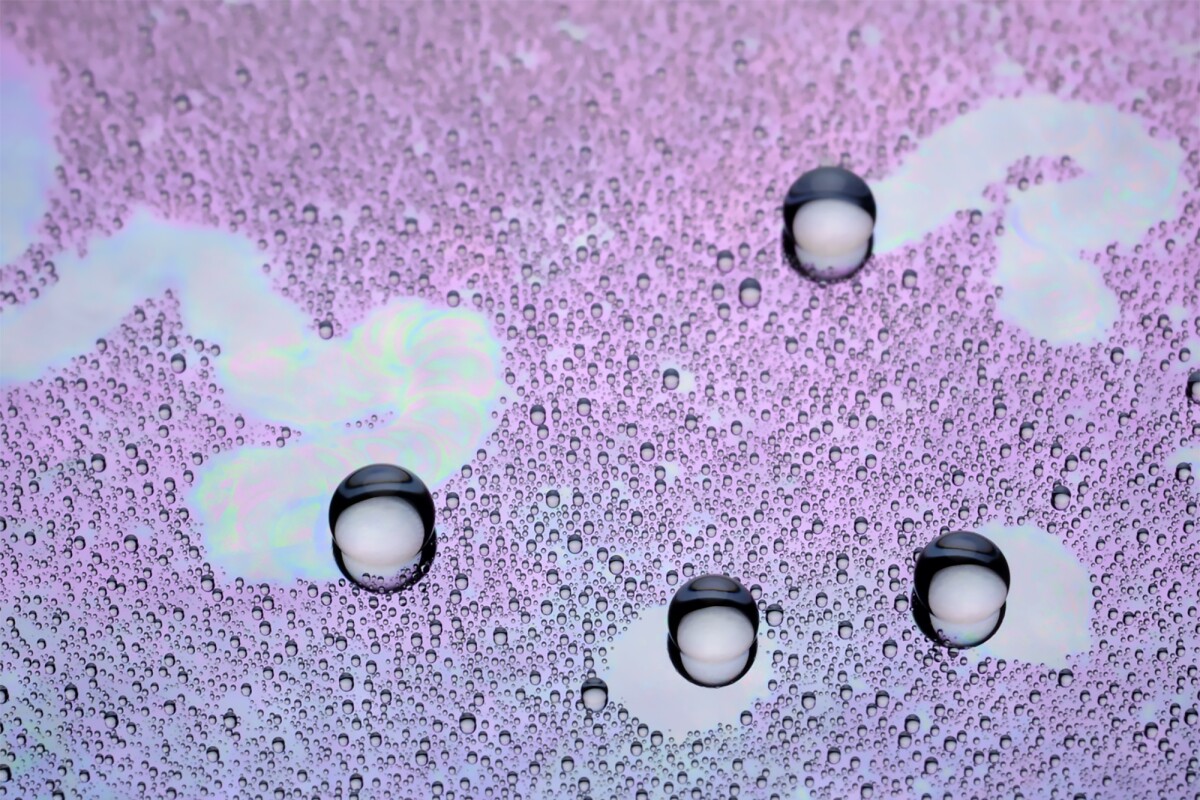
the tech for atmospheric water harvesting is pretty rough and really a proof of concept. we want to psition multiple surfaces able to also withstand air flow and the device really also needs to clam up with rising wind.
what this tells us is that surface modification is our freind.there is always airflow, but most can be non turbulent. multiple surfaces edge on to the wind allowws for maximum water draw. spacing matters of course but it all says sweet spots.
now imagine sails consiting on thousands of verticle strips several inches wide in laminer layers some how held apart and perhaps still naturally collapsible.
now imagine really producing a river of water with this in the desert.
this promises to be a difficult tech to develop but it literally promises to leap ahead of natural needs.
"Cheerios effect" unlocks high-efficiency water harvesting
By Paul McClure
March 10, 2024
Adding lubricant to a surface improved water condensation rates
Fauzia Wardani/KAUST
VIEW 2 IMAGES
You know when you pour milk into a bowl of breakfast cereal and the floating cereal tends to clump together? In fluid mechanics, that phenomenon is known as the ‘Cheerios effect,’ and it’s inspired the development of a unique but more efficient water-harvesting system that could be particularly useful in arid regions.
Researchers from the King Abdullah University of Science and Technology (KAUST) in Saudi Arabia, coated a surface with a lubricant film and found that it caused water droplets to combine faster, akin to the Cheerios effect.
MORE STORIES
“We are interested in designing surfaces that can promote condensation of water, which has important heat-transfer and water-harvesting applications,” said Marcus Lin, who led the research. “Think of water condensing on a cold soda can. The droplets can only move once they grow big enough for gravity to pull them down.”
The researchers thought adding a thin oil film would lubricate a surface, causing water droplets to move faster, freeing up space for further droplet condensation and thereby boosting condensation rates. It worked. But how the water droplets reacted surprised them.
They observed the condensate droplets, ranging in size from tens of microns to several millimeters, engage in a spontaneous and complex collective ‘dance.' The droplets moved in a snake-like fashion until the lubricant was depleted, at which point they switched to a circular motion. As the moving droplets continually redistributed the lubricant across the surface, they resumed their twisty dance.
“They initially moved in a serpentine manner before transitioning into circular motions and then back again,” Lin said. “These motions occurred across scales ranging from micrometers to several centimeters, and they lasted for hours.”
The Cheerios effect in full ... effect
Like the Cheerios in milk, the condensate droplets in oil were drawn towards neighboring droplets. The larger droplets’ self-propulsion was driven by energy released as they merged with smaller droplets in their path.
The researchers say that devices that can efficiently capture water from the air through simple condensation, with no energy input, are widely prized as pressure on freshwater sources grows. This is of particular importance in arid areas such as Saudi Arabia.
“By optimizing the collective motion of condensing droplets, we can greatly increase condensation rates and hence design more efficient water-harvesting systems,” said Lin.
The researchers plan to explore further what drives the droplets’ complex dance, particularly the shift from serpentine to circular movement.
The study was published in the journal Physical Review Letters.
Source: KAUST


No comments:
Post a Comment